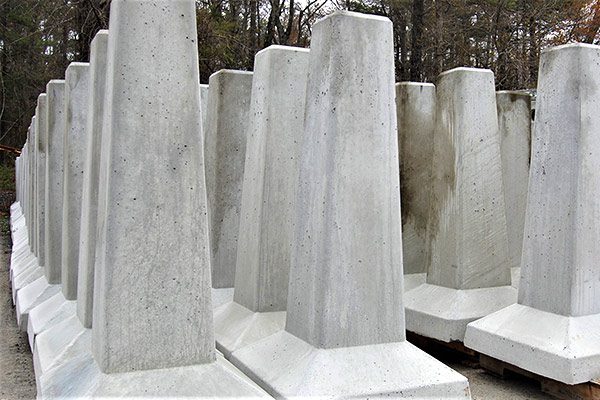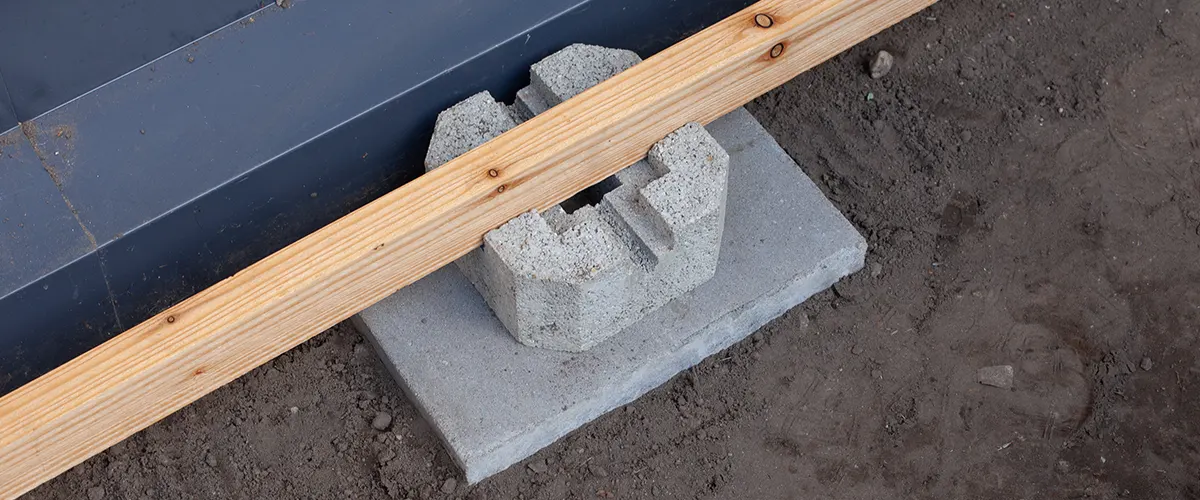Safeguard Structures, Long-term Impressions: Mastering the Art of Deck Footings Installation
Safeguard Structures, Long-term Impressions: Mastering the Art of Deck Footings Installation
Blog Article
Specialist Tips for Installing Deck Footings to Support Your Outdoor Area
When it comes to developing a deck, one of the most vital aspects to think about is the setup of proper footings. These footings are the foundation upon which your outdoor space will certainly relax, providing stability and assistance for years to come. What specifically does it take to set up deck grounds appropriately?
Value of Proper Deck Grounds
Correct deck footings are essential for making certain the stability and durability of your outdoor space. Without solid and effectively installed footings, your deck may end up being unstable, leading to security risks and pricey repair services.

Along with stability, appropriate deck footings additionally add to the durability of your exterior area (Deck Footings). Footings that are made and built to endure the aspects and soil problems in your location will certainly help prevent the deck from resolving or moving over time. By guaranteeing the grounds are effectively sized and installed, you can decrease the risk of damage to the deck structure, extending its life expectancy and decreasing the requirement for expensive repair work or replacements

Picking the Right Type of Grounds
When selecting the suitable type of footings for your deck, it is essential to take into consideration variables such as dirt conditions, neighborhood building ordinance, and the general layout of your outdoor room. The kind of footing you select will play a vital role in making certain the stability and longevity of your deck.
One typical kind of footing is the concrete footing. Concrete footings appropriate for the majority of dirt problems and provide outstanding support for decks. They are commonly installed below the frost line to stop changing and resolving as a result of freezing and thawing cycles. Another option is helical piers, which are optimal for areas with unsteady dirt or high water tables. These piers are screwed right into the ground and supply solid assistance for the deck.
Sometimes, you may need to use specialized grounds, such as pile grounds or deep structures, if you are constructing a multi-level or big deck. These footings are created to disperse the weight of the deck over a larger area, making sure stability and stopping resolving or sinking.
Prior to picking a type of ground, it is necessary to consult local building regulations and guidelines to make certain conformity. Furthermore, think about the design and meant use your outside space. Variables such as the dimension, shape, and load-bearing needs of your deck will certainly influence the sort of footing that is most ideal.
Preparing the Ground for Footing Installment
To effectively prepare the ground for footing setup, it is essential to analyze the soil conditions and take needed steps to ensure security and sturdiness of the deck. The initial step is to dig deep into the area where the grounds will be mounted. The depth of the excavation will depend on the frost line in your area and the particular requirements of the deck layout. It is important to get rid of any type of plant life, rocks, or debris from the excavation to make sure a solid structure.
As soon as the location has actually been excavated, the following step is to small the dirt. This can be done utilizing a plate compactor or by utilizing a hand meddle. Compacting the soil assists to remove any kind of spaces or air pockets, which can bring about working out and instability with time.
After condensing the dirt, it is very important to lay a layer of crushed rock or smashed rock at the end of the excavation. This will certainly provide drain and assistance to stop water from pooling around the footings, which can lead to disintegration and instability.
Step-by-Step Overview to Putting Up Deck Footings
After properly preparing the ground for footing installation, the following step is to begin the process of setting up deck footings. This detailed overview will certainly supply you with a clear understanding of just how to mount deck grounds for your outdoor space.
Figure out the place: Begin by marking the settings of the deck grounds utilizing risks and string. Make sure that the places align with the style and layout of your deck.
Dig the holes: Use a message opening miner or an auger to dig the openings for the footings. The depth and size of the openings should be in conformity with neighborhood building ordinance and the details needs of your deck layout.
Degree the holes: Make use of a level to guarantee that the holes are dug to the correct deepness and are level with each various other. (Deck Footings)
Include gravel: Area a layer of Extra resources crushed rock at useful reference the end of each hole to improve drainage and prevent the timber from deteriorating.
Put the grounds: Position the footings into the openings, seeing to it they are degree and plumb. Utilize a level and a gauging tape to make certain precision.
Secure the grounds: Put concrete right into the openings around the footings, filling them to the top. Use a message level to make certain the footings remain level as the concrete collections.
Allow time for healing: Let the concrete treatment according to the manufacturer's guidelines before waging the deck building and construction.
Typical Errors to Avoid Throughout Footing Setup
One important element to consider during the setup of deck grounds is preventing common errors that can compromise the security and durability of your outdoor area. While deck grounds may appear like a straightforward and simple part of the construction process, overlooking specific elements can bring about costly fixings and potential security hazards down the line.

Furthermore, neglecting to mount proper water drainage steps can create water to gather around the grounds, resulting in rot, degeneration, and the eventual weakening of the deck's foundation. Furthermore, making use of the wrong sort of footing product or falling short to properly safeguard the grounds can jeopardize their architectural honesty.
To prevent these blunders, it is vital to talk to a professional or follow market standards to make sure correct footing setup. By doing so, you can make sure the security and longevity more tips here of your outside room, providing a risk-free and delightful setting for years to find.
Verdict
Finally, installing correct deck footings is important for the stability and durability of your outside area. By choosing the best type of footings and appropriately preparing the ground, you can ensure a strong structure for your deck. Adhering to a detailed overview and avoiding common mistakes throughout footing installment will certainly additionally boost the resilience and safety and security of your deck.
Proper deck footings are important for making sure the stability and longevity of your outside area. The footings offer as a link in between the deck and the ground, permitting the weight of the deck and its residents to be dispersed evenly right into the soil.One common type of ground is the concrete footing. Insert the grounds: Put the footings into the openings, making sure they are level and plumb. Secure the footings: Put concrete right into the holes around the footings, loading them to the top.
Report this page